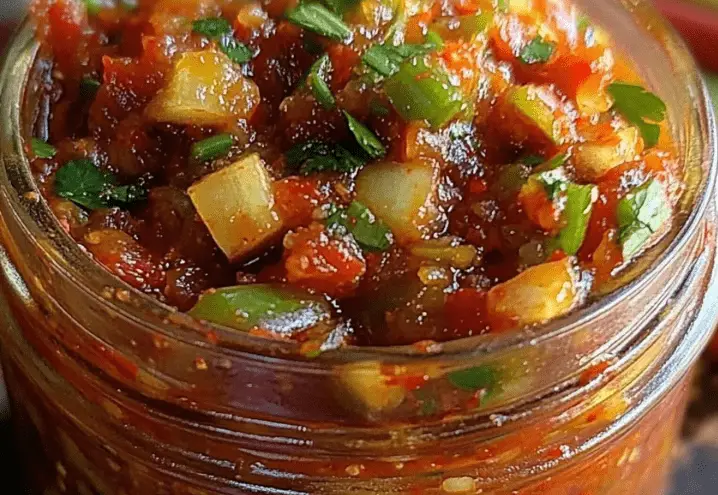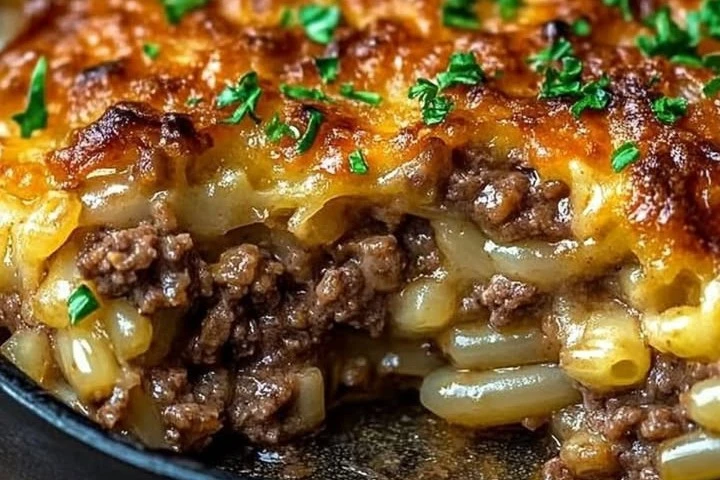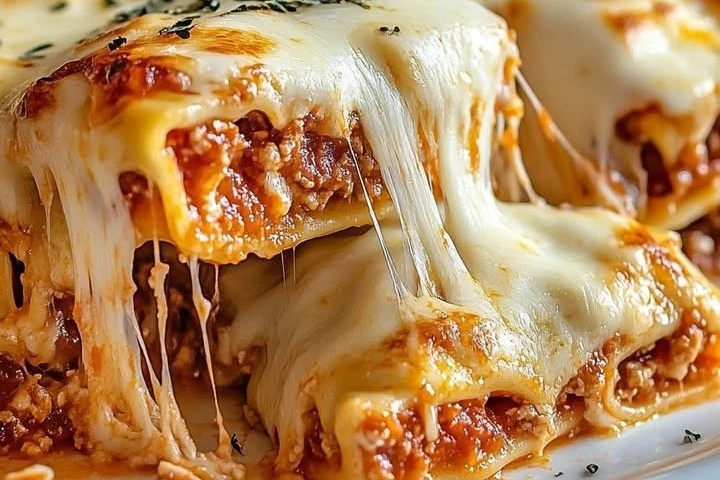Rhubarb Kimchi: A Tangy, Spicy Twist to Brighten Any Plate
Rhubarb Kimchi: A Tangy, Spicy Twist to Brighten Any Plate
Fermented foods are having their moment—and for good reason. They’re gut-friendly, vibrant, and packed with flavor. Enter Rhubarb Kimchi, a creative twist on the traditional Korean staple that combines the bold, spicy flavors of kimchi with the tart brightness of rhubarb. Whether you’re a seasoned fermenter or a total beginner, this easy and delicious recipe will inspire your next kitchen adventure. With just a few simple ingredients and some patience, you can create a colorful side dish that’s as satisfying as it is unique.
Table of Contents
Ingredients
- 2 cups rhubarb stalks, chopped into ½-inch pieces
- 1 small daikon radish or 2 carrots, julienned (optional, for crunch)
- 2 green onions, chopped
- 1 tablespoon salt (non-iodized)
- 1 tablespoon sugar
- 1 tablespoon gochugaru (Korean red pepper flakes)
- 3 garlic cloves, minced
- 1 teaspoon grated fresh ginger
- 2 teaspoons rice vinegar or lemon juice
- 1 tablespoon fish sauce or soy sauce (for vegan version)
- 1–2 tablespoons water (to thin the paste)
Instructions
- In a mixing bowl, combine the chopped rhubarb, daikon (or carrots if you like), and salt. Toss everything together and let it sit for 30 minutes to draw out the moisture. Once done, drain but don’t rinse.
- In a separate bowl, stir together the gochugaru, minced garlic, grated ginger, vinegar or lemon juice, fish sauce or soy sauce, sugar, and just enough water to create a thick, spreadable paste.
- Add the chopped green onions to your rhubarb mix. If you’re using gloves, now’s the time! Massage that delicious kimchi paste into the rhubarb and veggies until everything is well coated.
- Pack the mixture into a clean glass jar, pressing it down firmly to eliminate those pesky air pockets. Leave about an inch of space at the top.
- Cover the jar loosely with a lid or a cloth secured with a rubber band. Let it ferment at room temperature for 2–4 days, depending on your taste preference and room temperature. Remember to check daily and press the mixture down to keep it submerged in its own juices.
- Once it’s reached that perfect tangy flavor, seal the jar tightly and pop it in the fridge. The flavors will only get better with time.
Benefits of This Craft
Making Rhubarb Kimchi at home offers a range of benefits. First, fermentation is known for promoting gut health thanks to natural probiotics. Rhubarb, which is rich in fiber and antioxidants, provides a unique base that supports digestion and overall wellness. Plus, this recipe is an easy way to reduce food waste if you grow rhubarb or find it in abundance during the season. It’s a fantastic way to preserve seasonal produce in a creative and nutritious way.
Tips
- Always use non-iodized salt for fermentation, as iodine can interfere with the microbial activity necessary for successful fermenting.
- Wear gloves when mixing the paste with your hands—gochugaru can be spicy and sticky.
- Taste daily after the second day to monitor how tangy it’s becoming. The warmer your room, the quicker it ferments.
- If you like extra funkiness, let it go a day or two longer. If you like it crisp and lightly tangy, refrigerate it sooner.
What Does It Taste Like?
Rhubarb Kimchi delivers a bold fusion of spicy, sour, tangy, and slightly sweet. The rhubarb offers a firm, snappy texture and a tart edge, while the gochugaru spice paste infuses the mixture with heat and depth. The optional daikon or carrots add extra crunch. Together, they create a punchy, complex condiment that pairs beautifully with rice, noodles, grilled meats, or veggie dishes.
How to Store
Once fermented to your liking, seal the jar with a tight-fitting lid and store it in the refrigerator. It will keep for several weeks, if not months, and continue to develop flavor over time. Always use clean utensils when serving to maintain its freshness. If the kimchi becomes too sour for your liking, use it in cooked dishes like kimchi fried rice or stews, where the acidity becomes a bonus.

This Rhubarb Kimchi recipe is a fun, flavorful way to explore fermentation at home. It’s approachable, colorful, and endlessly adaptable. Whether you’re looking for a new side dish or want to explore the health benefits of fermented foods, this recipe delivers. Plus, it’s a great introduction to the art of homemade kimchi—with a surprising twist. It’s more than just a condiment; it’s a conversation starter and a celebration of seasonal ingredients.
For more kitchen inspiration and unique recipes like this one, check out More DIY craft ideas.
Other Sources for More Inspiration
- This Pinterest Pin about Rhubarb Kimchi fermentation offers visual inspiration for beginners
- The blog Maangchi.com has extensive Korean recipes if you want to explore traditional kimchi variations
- Fermenters Club provides tips and troubleshooting for fermentation enthusiasts
FAQ
Can I make this recipe without gochugaru?
Yes, you can substitute with another type of mild chili powder or omit it altogether if you prefer a milder kimchi.
How long does homemade Rhubarb Kimchi last?
Stored in the refrigerator, it can last several weeks to a few months. It will continue to ferment and become tangier over time.
Can I use frozen rhubarb?
Fresh rhubarb works best for texture, but if frozen is all you have, make sure to thaw and drain it before use.
Can I ferment it in a metal container?
No, always use glass or food-safe ceramic containers for fermenting to avoid reactions with acids.
Do I need a fermentation weight?
Not for small batches like this, but pressing the kimchi down daily during fermentation helps keep it submerged and fermenting evenly.







